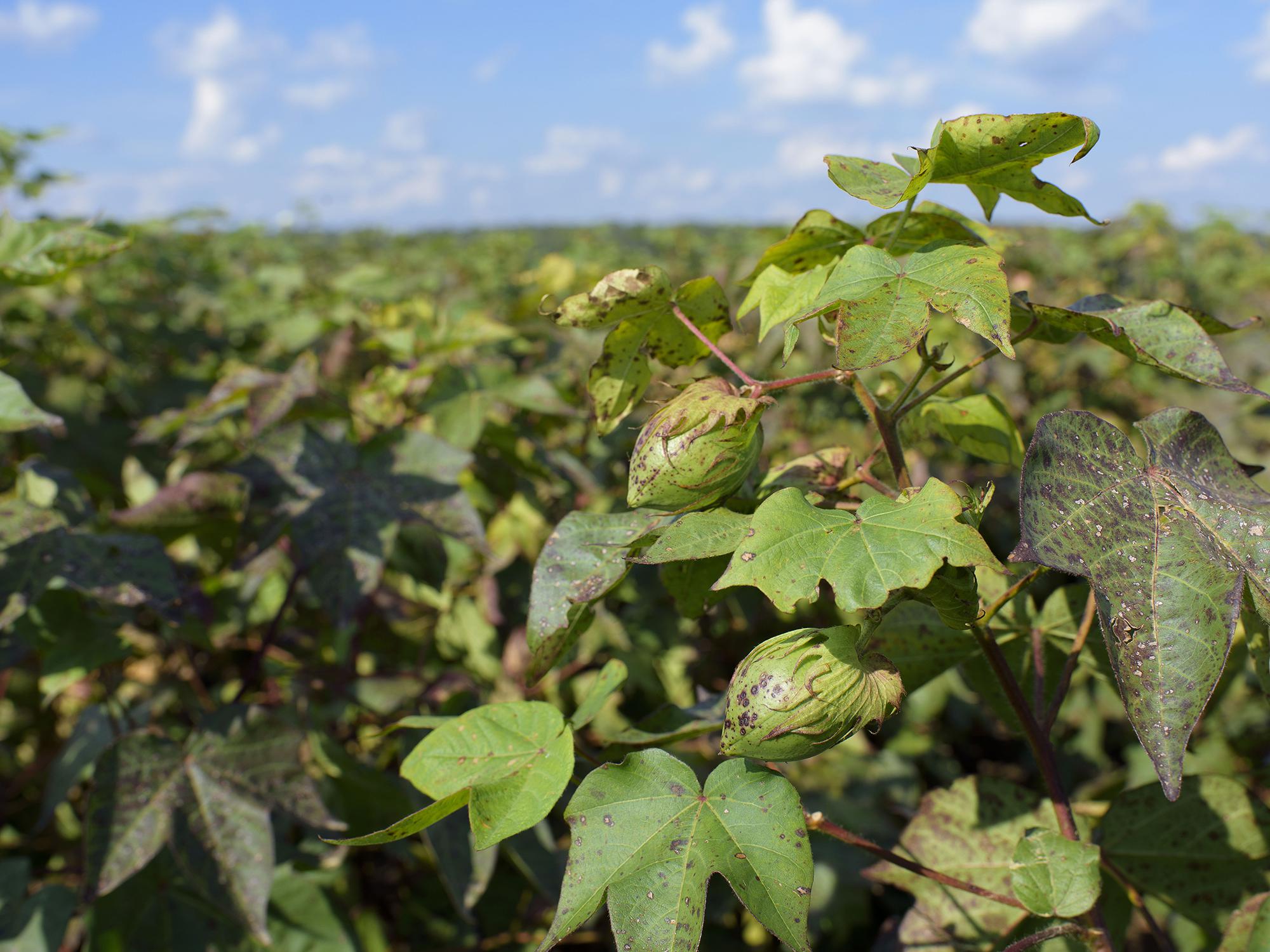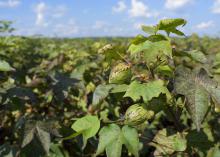Information Possibly Outdated
The information presented on this page was originally released on September 15, 2017. It may not be outdated, but please search our site for more current information. If you plan to quote or reference this information in a publication, please check with the Extension specialist or author before proceeding.
Hurricane season is not helping cotton
STARKVILLE, Miss. -- Rain, cool weather, more rain and some wind have slowed cotton maturation, but since the crop was a little behind schedule, the damage may be less than if harvest were already underway.
Darrin Dodds, cotton specialist with the Mississippi State University Extension Service, said recent weather is causing some yield loss, but it is hard to estimate how much.
“Being late to a degree helped the crop because rain did not string out open cotton, but given that we are running out of heat, we may have been better off with an earlier crop that had been defoliated and was standing up when the rain came,” Dodds said.
The U.S. Department of Agriculture estimated that as of Sept. 10, all the state’s cotton had set bolls and 47 percent had open bolls. However, the state’s cotton crop has widely varying maturity levels because the planting season was delayed and interrupted by rain.
“We had been fighting a late crop all year, and we needed a hot and dry September like we had last year, but we aren’t getting it,” Dodds said.
This late in the growing season, cotton needs heat to mature its remaining bolls. Dry weather allows producers to apply treatments that make cotton plants drop their leaves and open their bolls, preparing the crop for harvest.
“The remnants of Hurricane Harvey came through the river counties and dropped as much as 6 inches or more of rain, which certainly hurt this cotton crop,” Dodds said. “Harvey also brought a lot of wind, so much of the cotton in that part of the Delta is kind of twisted and laying down. That can potentially cause issues with defoliation, slow harvest way down and reduce yields.”
When Hurricane Irma’s remnants passed through the state one week later, it brought more unneeded rain. More importantly, it substantially reduced temperatures.
“The lack of heat is creating issues,” Dodds said. “We need it to help mature the uppermost fruit on the plants and help them crack open.”
Growers are now carefully watching the weather to decide when to apply harvest aid treatments. Six to eight weeks remain in the typical cotton harvest window, and growers will have to move quickly when weather allows crop defoliation so that cotton can be picked about two weeks later.
Dennis Reginelli, Extension area agronomy agent based in Oktibbeha County, said some cotton in south Lowndes County was picked the first week of September, but most cotton in his area is running out of time for maturity.
“Last year, Noxubee County led the state in overall cotton average and irrigated average. It’s hard to duplicate that, even in a good year,” Reginelli said. “Our yields will be lower this year.”
He said wide variation in planting dates will prevent maximum yields, while wet, cool weather will further reduce anticipated yields.
“We’re behind right now, but we hope to get some favorable weather while we’re picking so we can get the cotton out and have some good quality,” Reginelli said.
Brian Williams, Extension agricultural economist, said cotton cash and futures prices are just over 69 cents a pound. This is down slightly from a year ago but well below the 74-cent price earned in the spring.
Williams said the recent hurricanes had little long-term impact on cotton prices.
“Some of the south Texas cotton crop was already harvested when the hurricane hit, and flooding submerged many fields that had cotton bales stacked to the side,” Williams said. “At a minimum, that will significantly damage the quality of those bales, while some will not be salvageable at all.
“This brought a temporary spike in the markets, when at one point last week, cotton futures topped 75 cents per pound. However, prices have since fallen to levels just slightly above prehurricane markets,” he said.










